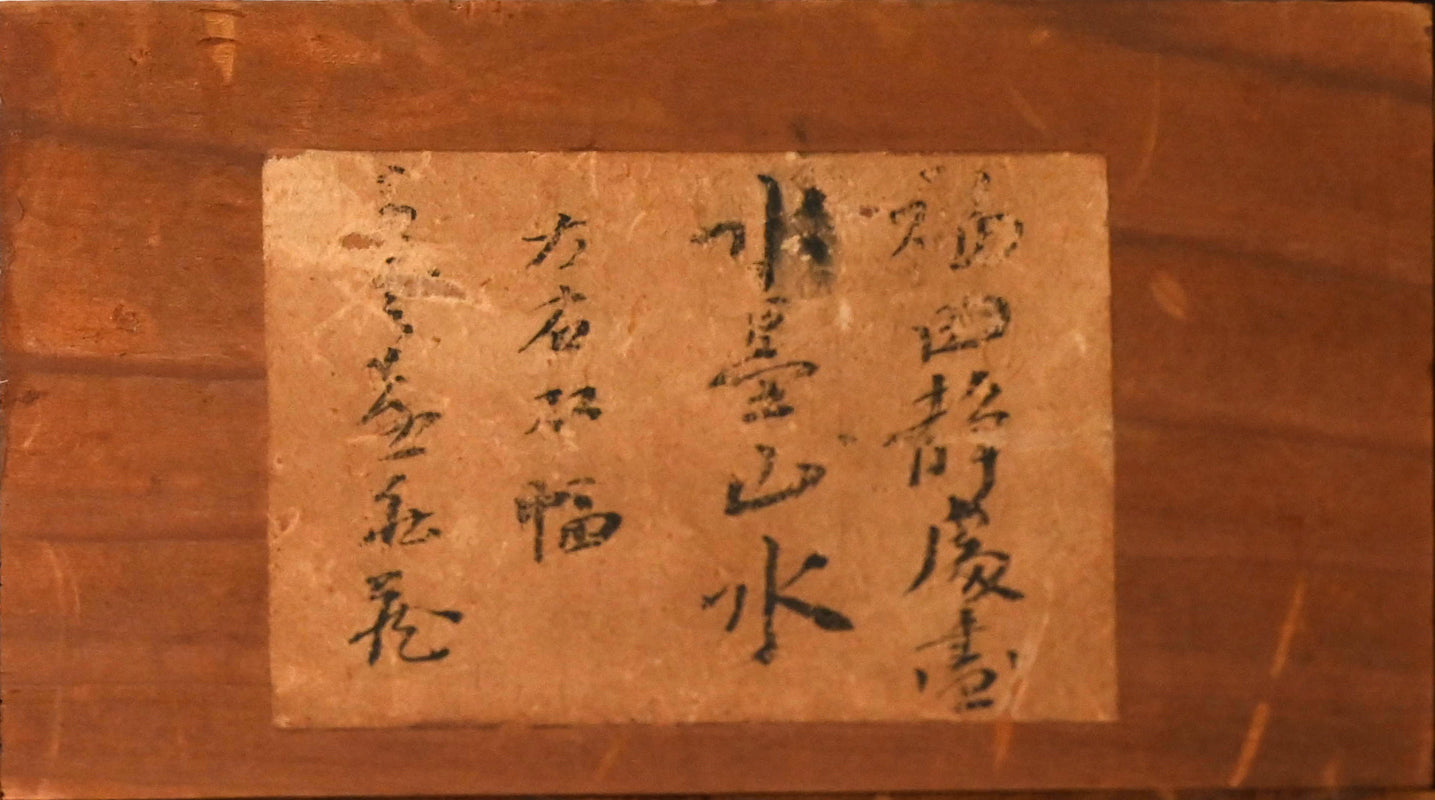Misty Peaks and Forested Heights ー福田 古道人 “幽峰煙樹図雙幅”
Misty Peaks and Forested Heights ー福田 古道人 “幽峰煙樹図雙幅”
Item Code: 古13
Couldn't load pickup availability
In this elegant pair of hanging scrolls, Fukuda Kodojin evokes a world where the grandeur of mountain and mist dwarfs the human realm into near-invisibility. Towering precipices rise in layered washes of ink, their precipitant slopes softened by drifting haze. Rounded dots and broken brush stippling suggest hardy stands of pine clinging to sheer stone, while passages of pale, wet ink dissolve upward into an atmosphere of timeless suspension. Tucked discreetly among these monumental forms, a small figure or thatched dwelling appears almost by accident—an incidental punctuation in an otherwise boundless landscape. Kodojin’s composition makes clear that the human presence is neither protagonist nor measure of scale; instead, the mountains themselves are the true actors, enduring and unmoved, while the human world flickers by like weather. The visual language—at once spare, abstractive, and subtly poetic—reflects Kodojin’s identity as both painter and kanshi poet. The brushwork moves fluidly between crisp contour and vaporous wash, echoing the literati ideal that painting is less a record of place than a meditation on spirit. This is nature not observed but intuited—an interior landscape rendered outward—where the solitary viewer is invited to feel, as Kodojin did, the humbling beauty of standing small beneath the immensity of sky and stone. Enclosed in an old wooden box titled Fukuda Seisho Okina Suiboku Sansui from the Seiun Taiso Collection. Ink on paper in rough beige silk border with dark-wood rollers. The entire scene is populated only by a solitary bird, shoulders hunched in the upper branches of a ragged tree in the foreground on the right scroll.
Fukuda Kodojin (1865-1944) an eccentric self taught artist, his status as a poet, calligrapher and literati artist has reached legendary status. Born at a time of great change (4 years before the final fall of the Edo Government), he lived through the westernization of Meiji, Taisho Democracy, the rise of Imperialism and final defeat of the Showa eras. He was self taught, part of a small group of artists existing outside conventional circles in pre-war Japan. He moved to a village outside of Kyoto in 1901, where he supported himself and his family by privately tutoring those who wished to learn Chinese-style poetry. Kodojin was simply a scholar. His poetry, painting, and calligraphy all stem from a life-long cultivation of the mind. He was known to have taken the time just before his death to destroy the large portion of his own remaining work, leaving only that which must have met some personal criteria. For more on his life see the book Old Taoist, or Unexplored Avenues of Japanese Painting. Twenty five paintings by the artist formed a private exhibition (from Gitter-Yelen) at the New Orleans Museum of Art in 2000, and he is part of the Hakutakuan collection among many others.
Share












































